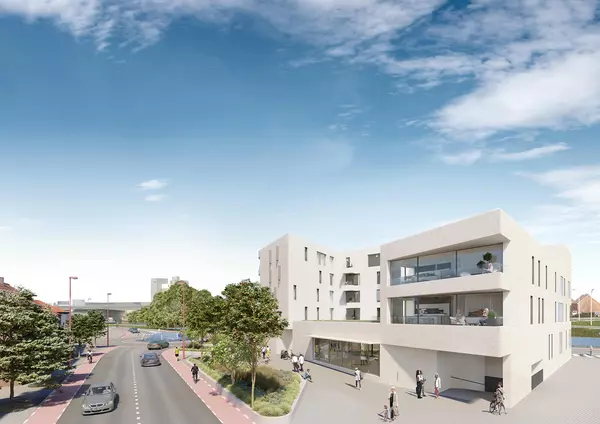Calgary’s Summer 2025 Market Recap: What Buyers and Sellers Need to Know for Fall
Calgary’s summer real estate market in 2025 has settled into a more balanced phase, creating fresh opportunities for buyers and sellers alike. While inventory has increased and sales activity moderated, creating more opportunities for buyers, these shifts have unveiled distinct pockets of strength across the city. Detached homes and well-positioned condos in key neighbourhoods continue to demonstrate price stability and strong buyer interest, offering sellers confidence as we move into fall.
Jesse Davies of Century 21 notes that, “For buyers, this evolving market opens doors to well-priced entry points in vibrant neighbourhoods with promising rental demand or growing amenities.” He highlights merging corridors like Fish Creek-adjacent southeast communities, which can provide steady cash flow prospects, while the downtown Beltline and East Village remain prime locations with ongoing urban revitalization and convenient transit access. Neighbourhoods such as Kensington and Sunnyside are examples of stable markets where lifestyle and community features sustain strong demand and solid pricing.
He also emphasizes opportunities for sellers. On the seller side, the City Centre, Beltline, and west-end family-friendly neighbourhoods like Brentwood and West Springs continue to attract engaged buyers, underscoring the resilience of Calgary’s housing market.
Summer Market Overview
This summer has created localized buying opportunities in Calgary, while preserving seller advantage in key neighbourhoods where supply stayed tight and continuing to benefit from strong fundamentals.
Throughout June and July, new listings increased by approximately 8.6% compared to last year, resulting in active inventory levels reaching their highest point since 2021, according to Calgary Real Estate Board (CREB). This rise in supply expanded buyers’ choices, easing competition and bringing the sales-to-new-listings ratio to around 50%, an indicator that market power is moving away from sellers towards greater balance in many segments.
Although sales activity softened over the summer, with home sales declining roughly 11.6% year-over-year in July, this reduction aligns sales volumes closer to historical pre-pandemic averages. The growing inventory and moderated sales combined to provide buyers with a less pressured environment.
Despite the greater inventory, prices have remained resilient, without significant drops. The composite benchmark price remained stable near $764,300 in June, with detached homes holding steady, showing less than a 1% year-over-year decline. Semi-detached homes saw a modest increase, while condominiums experienced a decline of just over 3% compared to the same time last year. Row and townhouse prices displayed varied movement depending on neighbourhood conditions.
Neighbourhood dynamics highlight where opportunities lie. The City Centre maintained price resilience, with benchmark detached home prices down by only about 1% year-over-year and faster sales than many suburban areas. In contrast, the North East district saw a stronger buyer’s market, with months of supply exceeding six and prices approximately 6% lower than last year, presenting attractive entry points for buyers. The West and South East districts reported increased sales activity alongside rising inventories, helping sustain price stability in those areas, according to CREB’s July market report.
These summer 2025 trends indicate a Calgary market that is maturing and balancing supply with demand. Buyers benefit from a wider selection and less urgency, especially in neighbourhoods showing early signs of appreciation and stable rental demand. Sellers in core and well-located communities continue to enjoy strong interest and price stability.
Davies stresses, “Navigating the fall market successfully will depend on understanding these neighbourhood-specific trends and aligning strategies accordingly.
The rental market, especially in transit-connected and southeast communities, remains resilient with low vacancy rates and rising rents. This combination offers investors and owner-occupiers alike promising prospects as Calgary continues its steady growth trajectory.

What Buyers Need to Know This Fall
Buyers now have more options across the city, but opportunities are most promising in specific neighbourhoods experiencing supply increases or rental demand growth. Certain northern and southeast pockets are currently offering discounted entry or cash flow plays, while central corridors are featuring good stability.
North and Northeast Communities: Marlborough, Whitehorn, Taradale
In these areas, increased listings and a slight softening in prices create attractive entry points for buyers. Davies comments, “Months of supply have been increasing in these areas, which gives buyers negotiation leverage.” While these neighbourhoods have seen apartment and row home prices moderate, rental demand remains stable, supported by transit accessibility and affordable pricing. For buyers considering long-term holding or rental income, these neighbourhoods represent solid value with upside potential as the market rebalances.
Fish Creek-Adjacent Southeast Neighbourhoods
Douglasdale and McKenzie Towne, among others, continue to demonstrate strong rental markets, with vacancy rates below the city average and rising rents, according to Davies. These areas benefit from family-friendly amenities and ongoing population growth, which underpin steady demand for multi-family properties and townhomes. Buyers focused on income generation will find these neighbourhoods appealing, with relatively stable pricing and resilient rental cash flows.
Core Downtown: Beltline and East Village
Despite an increase in listings, these neighbourhoods maintain months of supply below three, reflecting sustained demand. Davies emphasizes the appeal of proximity to transit, employment, and entertainment hubs, which continues to attract both renters and buyers in Beltline and East Village. Buyers looking for walkable urban lifestyles or transit-oriented properties will find options that offer liquidity and lower risk of price erosion.
Inner Northwest: Kensington and Sunnyside
These neighbourhoods have held pricing strength throughout the summer. While there is more competing buyer interest in these areas, their price trends, combined with their reputation for walkability, established schools, and local amenities, attract buyers prioritizing quality of life and stable investment.
What Sellers Need to Know This Fall
Sellers benefit most in neighbourhoods where supply remains constrained and demand is robust. Center and west pockets are key spots where marketing and quality still translate into price.
City Centre and Beltline
Detached homes and premium condos in central hotspots continue to command strong interest, according to Davies. He points out that “Although Beltline presents excellent opportunities for buyers, the market is nuanced and also provides strong prospects for sellers.” Ongoing urban revitalization efforts are currently enhancing neighbourhood desirability. Sellers who position properties near transit, amenities, and with modern updates can achieve competitive offers and stable or increasing prices.
Southeast: Inglewood
This revitalized neighbourhood is a hotspot for buyers seeking lifestyle and culture. Despite rising inventory citywide, this area maintains low months of supply and quick turnover, driven by its unique blend of historic charm, trendy shops, and proximity to the Bow River. “For sellers, this strong demand and limited availability create a competitive market, often resulting in favourable sale prices and faster transactions compared to other parts of Calgary,” according to Davies.
West and Northwest: Brentwood, West Springs, Signal Hill
Family-oriented communities with strong schools and green spaces have preserved demand levels. Months of supply in these neighbourhoods remain below city averages, especially for detached homes. Sellers here can benefit from buyers prioritizing features like parks and educational facilities.
Neutral Zones and Transitional Markets
Davies also highlights some key areas that are balanced for both buyers and sellers. Some newer suburbs and outer city areas experienced significant inventory growth, creating more balanced conditions with modest pricing pressure. Buyers and sellers in these zones, such as Mahogany, Seton, Legacy, and parts of Walden, should expect more negotiation and longer selling times, but also opportunities as development completes and infrastructure improves, with future growth and value appreciation.
Adopting a Strategic Approach for Fall 2025
Calgary’s summer 2025 market signals a maturing phase, blending stability with targeted opportunity.
Going into fall, Calgary’s market is nuanced and evolving; regional differences and even property-specific factors play a critical role in successful buying, selling, and investing. This creates unique opportunities for those leveraging detailed, ultra-local knowledge. Jesse Davies is a recognized expert with the deep, on-the-ground insight necessary to navigate these complexities effectively. His expertise helps clients identify pockets of strength or value, enabling tailored strategies that maximize positioning and outcomes as the city moves into the fall market.
Recent Posts










